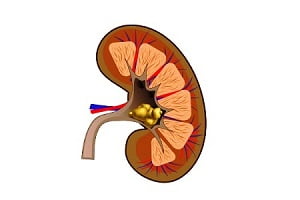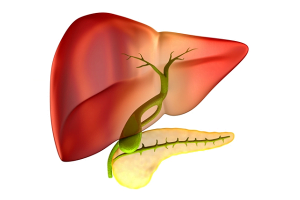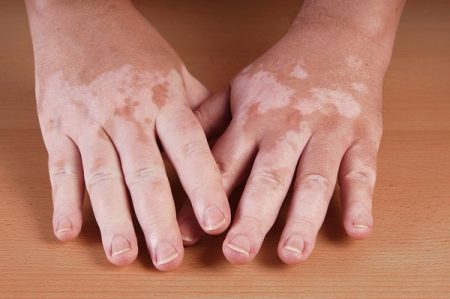What are the causes of vitiligo?
Vitiligo occurs when pigment producing cells known as melanocytes die or stop production of melanin. Skin loses its characteristics due to melanin loss.
It is still not clear as to why these cells die. As non-segmental vitiligo (most common type) is an autoimmune disease, it develops when the immune system destroys the melanocytes in the skin, mistaking it as a foreign body. It is this pigment that gives the skin, hair and eyes colour. The patch of skin involved in it becomes lighter or white.
The overall skin surface that gets affected by vitiligo varies significantly from person to person.
Read about the symptoms of vitiligo.
The exact cause of vitiligo is not yet clear. One or more genes may be involved for a person to be more likely affected by the condition.
Risk factors of the vitiligo
These are not direct causes of the disease, but seem to be correlated in some way. People who develop white patches on their skin should contact a skincare specialist immediately to avoid further complications.
The following risk factors can put a person at a higher of developing vitiligo.
- Autoimmune disorder (such as hyperthyroidism, Hashimoto’s disease, Addison’s disease, Alopecia areata and Pernicious anemia)
- Genetic oxidative stress imbalance
- Any activation incident like stress, chemicals exposure or viral
- Skin damage due to a critical sunburn or cut
- Nerve problem
- Genetic history, but not all with a history in family develop it.
- Diabetes
Vitiligo is a non-transmittable disease and people cannot catch it from one other. It has no age, sex or ethnic discrimination, but it develops by the age of 20 generally.
Patches gradually get larger, thereby causing humiliation in many individuals. Patients are not born with dysfunctional melanin cells by birth, but rather stop pigment production for some unexplained cause.
There is no known cure for the condition. Mainly treatment therapies focus on reducing the contrast between the white patches and normal skin areas, by returning pigment to the patches or taking pigment away from the normal skin. But it cannot prevent continued loss of skin colour or a recurrence of it.
Read about treatments for vitiligo.






